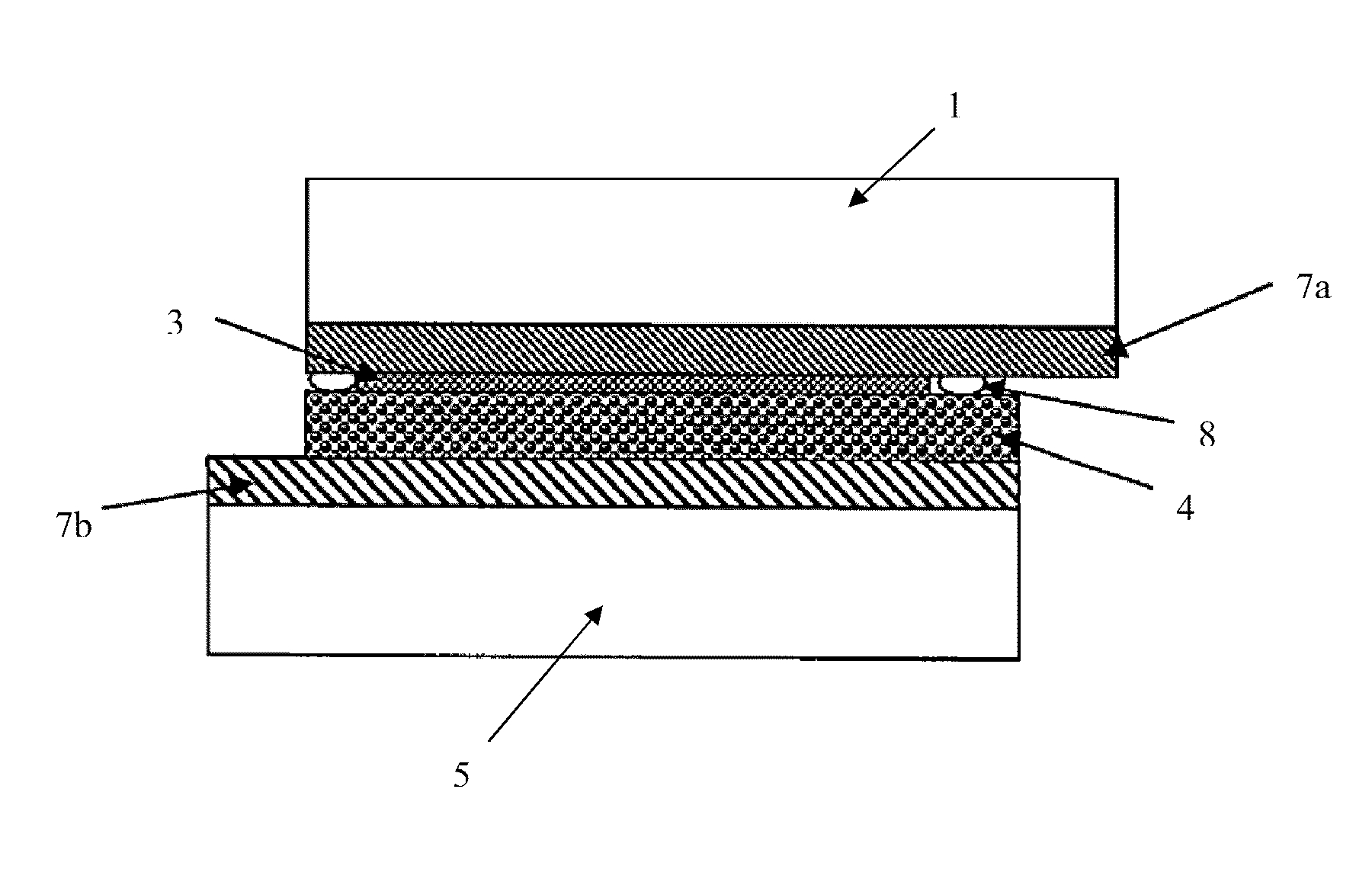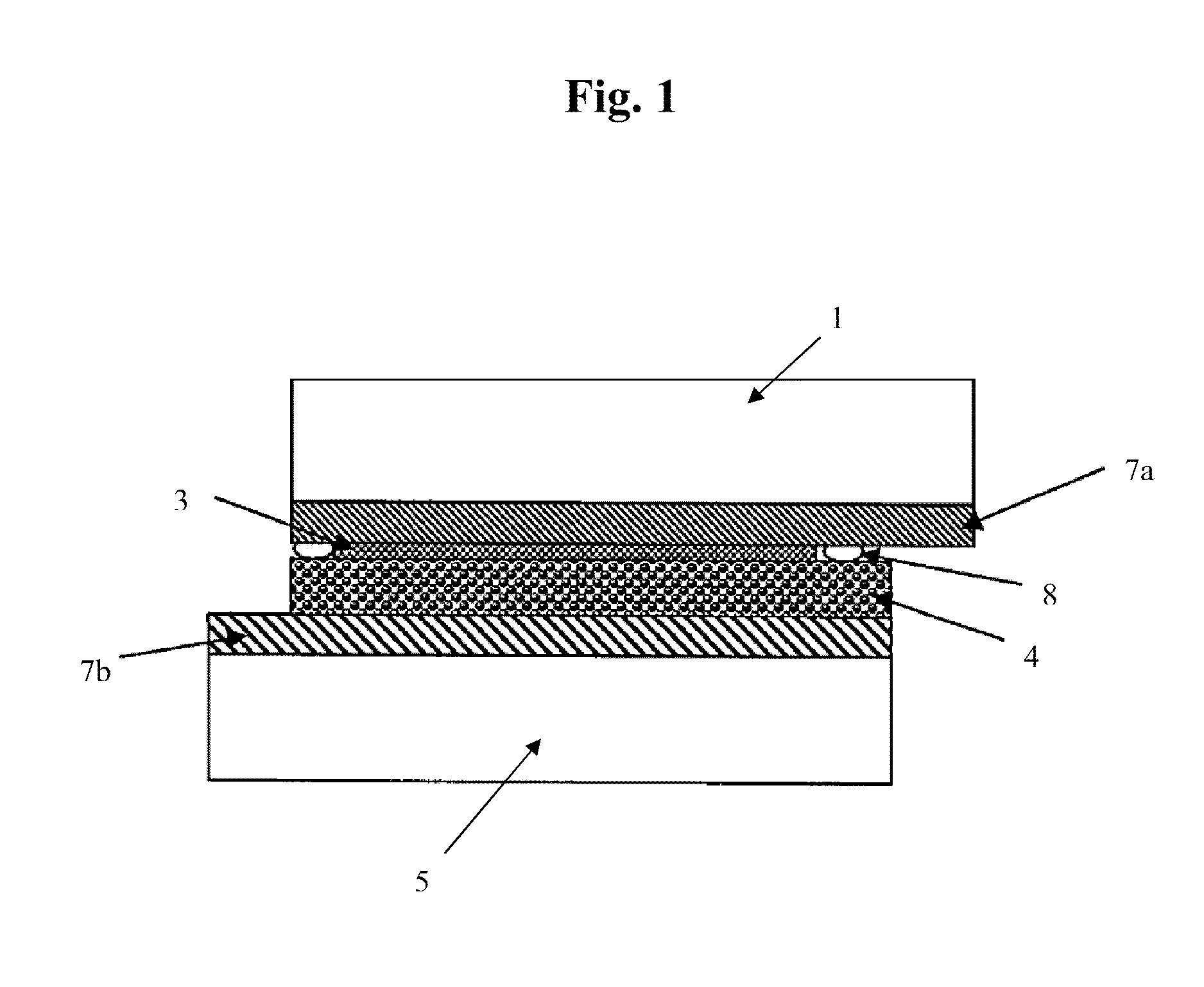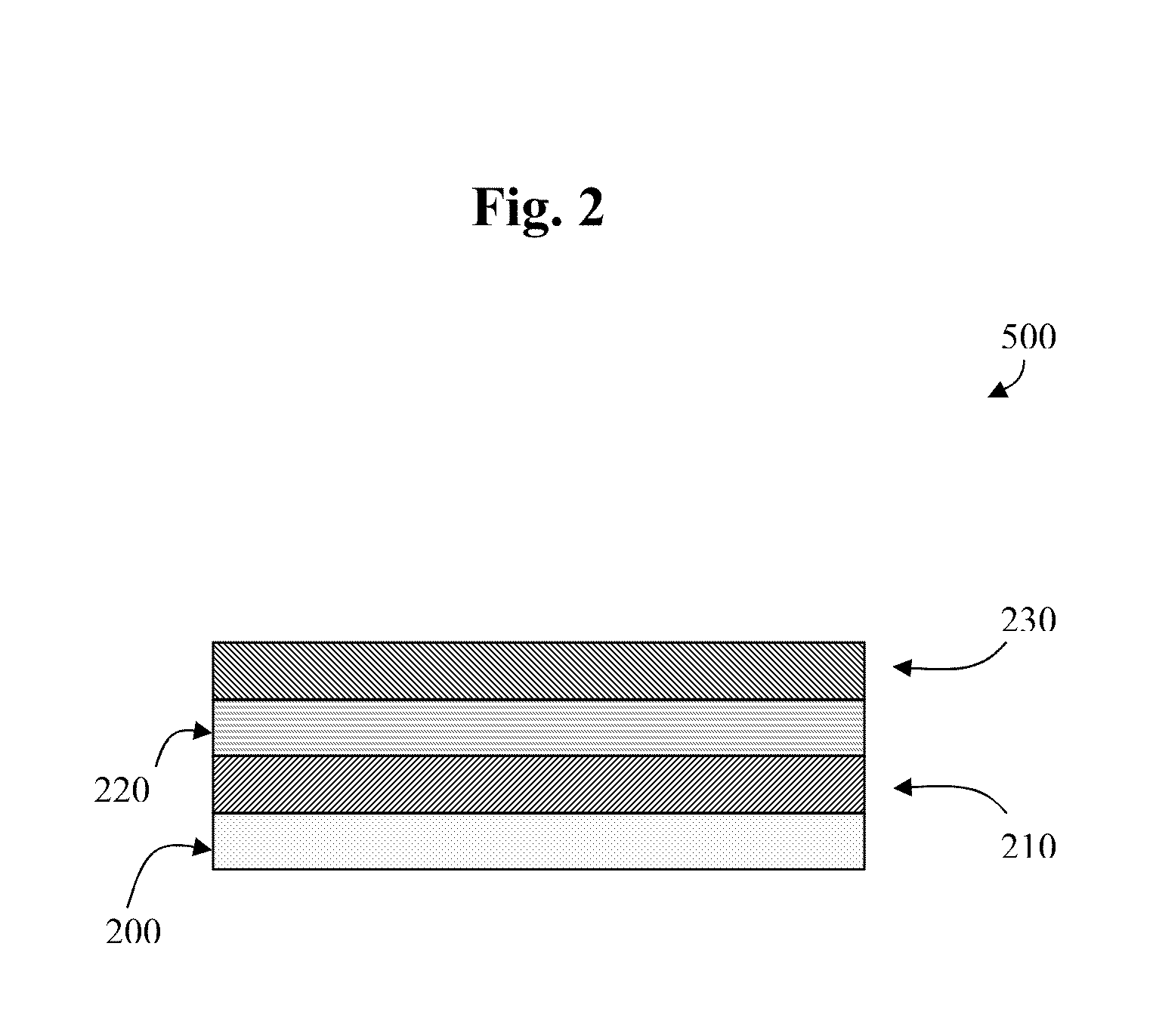Dye Doped Graphite Graphene Solar Cell on Aluminum
a solar cell and graphene technology, applied in the field of dye-dyesensitized or dye-doped solar cells, can solve the problems of electrolyte in the form of an electrolytic solution, reproducibility and safety, performance degradation,
- Summary
- Abstract
- Description
- Claims
- Application Information
AI Technical Summary
Benefits of technology
Problems solved by technology
Method used
Image
Examples
Embodiment Construction
[0028]Although the following detailed description contains many specifics for the purposes of illustration, anyone of ordinary skill in the art will appreciate that many variations and alterations to the following details are within the scope of the invention. Accordingly, the following preferred embodiments of the invention are set forth without any loss of generality to, and without imposing limitations upon, the claimed invention.
[0029]A preferred embodiment of the layering configuration of solar cell layers 500 of the present invention is illustrated in FIG. 2. The substrate 200 may comprise aluminum that may be provided in the form of aluminum foil, an aluminum sheet, or the like. The substrate 200 need not be limited to only such embodiments of material but may comprise any additional substrate materials known to one of ordinary skill in the art.
[0030]A first layer 210 applied to the substrate 200 may comprise graphite, graphene, C60, carbon nanotubes, or any combinations ther...
PUM
 Login to View More
Login to View More Abstract
Description
Claims
Application Information
 Login to View More
Login to View More - R&D
- Intellectual Property
- Life Sciences
- Materials
- Tech Scout
- Unparalleled Data Quality
- Higher Quality Content
- 60% Fewer Hallucinations
Browse by: Latest US Patents, China's latest patents, Technical Efficacy Thesaurus, Application Domain, Technology Topic, Popular Technical Reports.
© 2025 PatSnap. All rights reserved.Legal|Privacy policy|Modern Slavery Act Transparency Statement|Sitemap|About US| Contact US: help@patsnap.com



